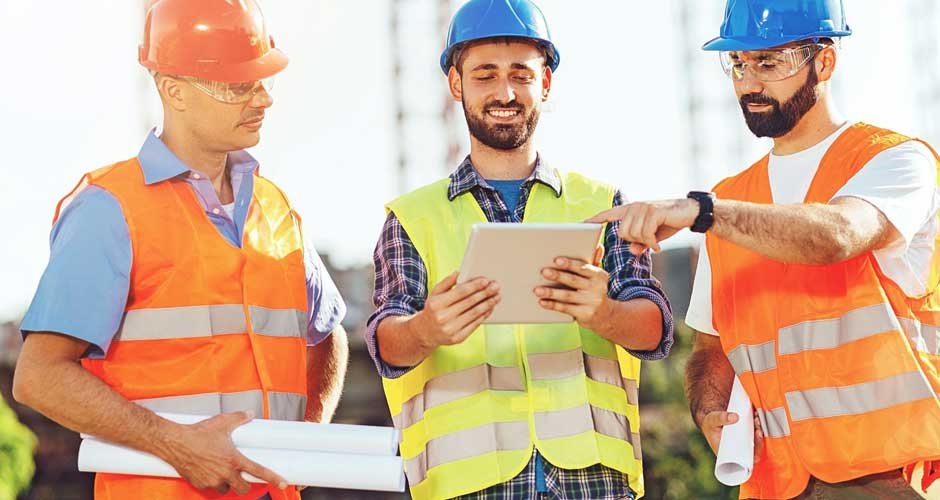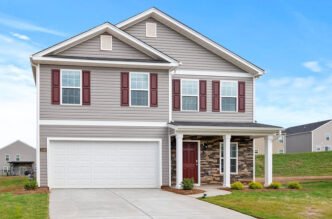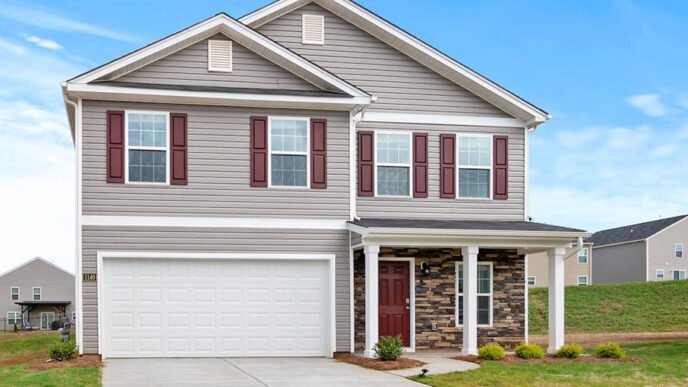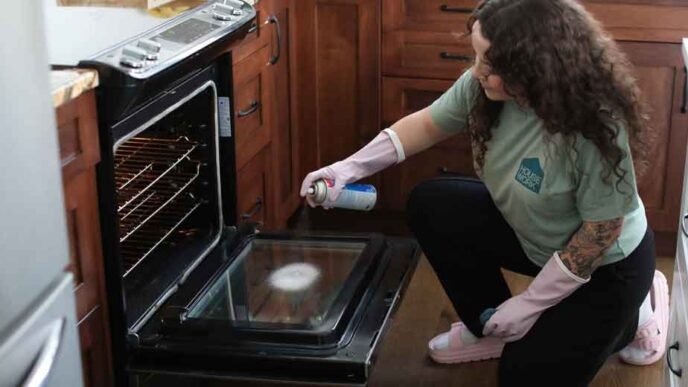Ensuring the safety of a building is paramount for both the people who use it and those responsible for managing it. Whether you own a commercial property, manage residential apartments, or are simply looking to enhance safety in your own home, there are numerous simple upgrades that can make a huge difference in safeguarding against accidents, emergencies, and other potential hazards. The best part? Many of these safety improvements are straightforward and cost-effective, yet offer significant long-term benefits.
In this guide, we’ll explore various upgrades you can implement to enhance building safety, ensuring a secure and protected environment for everyone.
Start with Fire Safety
Fire safety is one of the most critical areas to address in any building. Fires can spread quickly, causing devastating damage and posing serious risks to occupants. Taking proactive steps to prevent fires and manage potential hazards is essential for any property.
- Install or Upgrade Fire Detection Systems
One of the simplest yet most effective ways to improve fire safety is to install or upgrade automatic fire detection systems. These systems, which include smoke detectors and fire alarms, provide early warning in the event of a fire, allowing occupants to evacuate quickly and reducing the risk of injury or death. Modern fire detection systems can also be integrated with other building management technologies, ensuring that emergency services are alerted promptly. Make sure that smoke alarms are installed in key areas such as kitchens, hallways, and near bedrooms, and regularly check that they are working correctly. - Ensure Proper Fire Extinguishers Are Available
Fire extinguishers are a vital tool in combating small fires before they become uncontrollable. Make sure your building has the right types of fire extinguishers for different fire risks (such as Class A for combustibles, Class B for flammable liquids, and Class C for electrical fires). Place them in easily accessible locations, such as kitchens, corridors, and near fire exits, and ensure that staff or residents know how to use them. - Install Fire Doors and Fire-Resistant Materials
Fire doors are specifically designed to slow the spread of fire and smoke, giving occupants more time to evacuate safely. Installing fire doors in key areas like stairwells and hallways can significantly improve building safety. Additionally, using fire-resistant materials for walls, floors, and ceilings adds an extra layer of protection in case of a fire.
Upgrade Lighting for Safety
Adequate lighting is crucial for both indoor and outdoor areas of a building. Good lighting not only enhances visibility but also prevents accidents and deters criminal activity.
- Install Motion-Sensor Lighting
One of the easiest upgrades you can make is to install motion-sensor lighting around the building’s exterior, especially near entrances, parking areas, and pathways. These lights automatically turn on when motion is detected, providing illumination when needed and helping to deter intruders. Additionally, motion-sensor lights are energy-efficient, as they only operate when triggered, reducing electricity costs. - Improve Emergency Lighting
In the event of a power outage or emergency evacuation, well-lit exit routes are crucial for safe movement. Upgrade your building’s emergency lighting system to ensure that all stairwells, hallways, and exits remain illuminated during a power failure. Modern emergency lighting systems are often equipped with battery backups to maintain functionality even when the main power supply is compromised. - Upgrade Stairway and Hallway Lighting
Adequate lighting in stairways and hallways reduces the risk of trips and falls, particularly in buildings with older residents or individuals with mobility issues. Replacing old or dim light fixtures with bright, energy-efficient LED lights is a simple yet effective way to enhance safety in these areas.
Improve Security Measures
Building security is an integral part of overall safety. While larger security systems can be costly and complex, there are simple upgrades that can greatly improve security without breaking the bank.
- Install Access Control Systems
Access control systems, such as keycard entry or keypad locks, allow you to manage who can enter the building and when. These systems provide greater control over building access compared to traditional keys, which can be easily lost or duplicated. Additionally, access control systems can be programmed to restrict access to certain areas of the building, improving security for sensitive areas like storage rooms or offices. - Add Security Cameras
Security cameras are an excellent deterrent for criminal activity and provide valuable evidence in the event of a break-in or vandalism. Modern cameras come with high-definition video quality and can be monitored remotely via smartphone apps. Consider installing cameras at key points around the building, such as entrances, car parks, and common areas. Having visible cameras can deter potential intruders while providing peace of mind to occupants. - Use Smart Doorbells for Added Security
For residential buildings or smaller commercial properties, smart doorbells are a simple and affordable way to boost security. These devices allow you to see and communicate with visitors through a smartphone, even if you’re not physically at the building. Smart doorbells with built-in cameras can also record activity around entrances, providing an added layer of security.
Maintain Building Infrastructure
Keeping your building’s infrastructure in good condition is vital for ensuring long-term safety. Routine maintenance and simple upgrades can prevent accidents and structural issues that may arise over time.
- Check and Repair Handrails and Guardrails
Staircases and balconies should always have sturdy handrails and guardrails to prevent falls. Over time, these safety features can become loose or damaged, posing a serious hazard. Regularly inspect handrails and guardrails for signs of wear and repair them as needed. For added safety, consider installing handrails in areas where there are none, such as long hallways or ramps. - Upgrade Flooring in High-Traffic Areas
Worn or slippery flooring is a common cause of accidents, particularly in high-traffic areas like lobbies, kitchens, or bathrooms. Upgrading the flooring to slip-resistant materials, such as textured tiles or vinyl, can significantly reduce the risk of slips and falls. If replacing the flooring isn’t an option, consider applying slip-resistant coatings or mats in areas that are prone to wetness or high foot traffic. - Ensure Proper Ventilation
Proper ventilation is essential for maintaining good air quality and preventing the buildup of harmful gases like carbon monoxide. Check that your building’s ventilation systems are functioning correctly and have them cleaned or serviced regularly. Installing carbon monoxide detectors in areas with gas appliances can also improve safety by providing early warnings in case of a leak.
Upgrade Window and Door Security
Windows and doors are common entry points for intruders, and upgrading their security features is a simple yet effective way to improve building safety.
- Reinforce Entry Doors
Ensure that all exterior doors are solid and made of durable materials like steel or solid wood. You can further enhance security by installing deadbolts, strike plates, and door jammers. For glass doors, adding security film or shatterproof glass can prevent easy break-ins while maintaining an aesthetic appeal. - Install Window Locks and Bars
Many windows, especially on ground floors, are vulnerable to break-ins. Installing secure window locks or adding window bars can prevent intruders from gaining access to the building through these openings. For buildings in areas with higher crime rates, security bars can provide an additional layer of protection without sacrificing ventilation or light.
Regular Safety Audits and Inspections
Finally, one of the most effective ways to maintain building safety is by conducting regular safety audits and inspections. These audits can help identify potential hazards before they become significant issues.
- Schedule Regular Safety Inspections
Hire professionals to conduct safety inspections of the building’s infrastructure, fire safety systems, electrical wiring, and plumbing. Identifying issues early allows you to address them before they pose a danger to occupants. - Conduct Routine Drills and Training
Safety doesn’t just depend on building upgrades—it also relies on the preparedness of the people inside the building. Conduct regular fire drills and safety training sessions to ensure that everyone knows what to do in the event of an emergency. Simple training in how to use fire extinguishers or where to find emergency exits can make all the difference in a crisis.
Improving building safety doesn’t always require complex renovations or expensive overhauls. Simple upgrades, like installing automatic fire detection systems, improving lighting, or reinforcing entry points, can have a significant impact on the security and safety of any building. By making small but meaningful changes, you can create a safer environment for everyone who lives or works in the space. Regular maintenance, routine inspections, and a focus on both fire and security measures will ensure that your building is well-prepared to handle any potential hazards.












